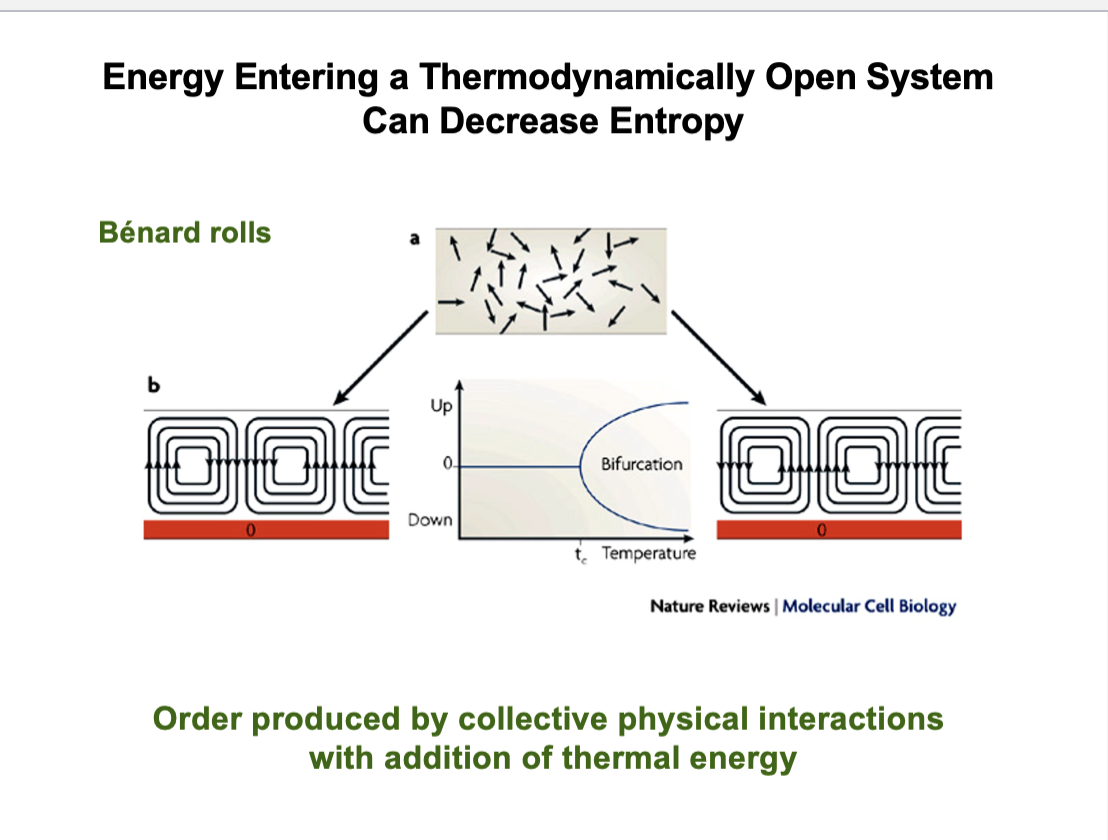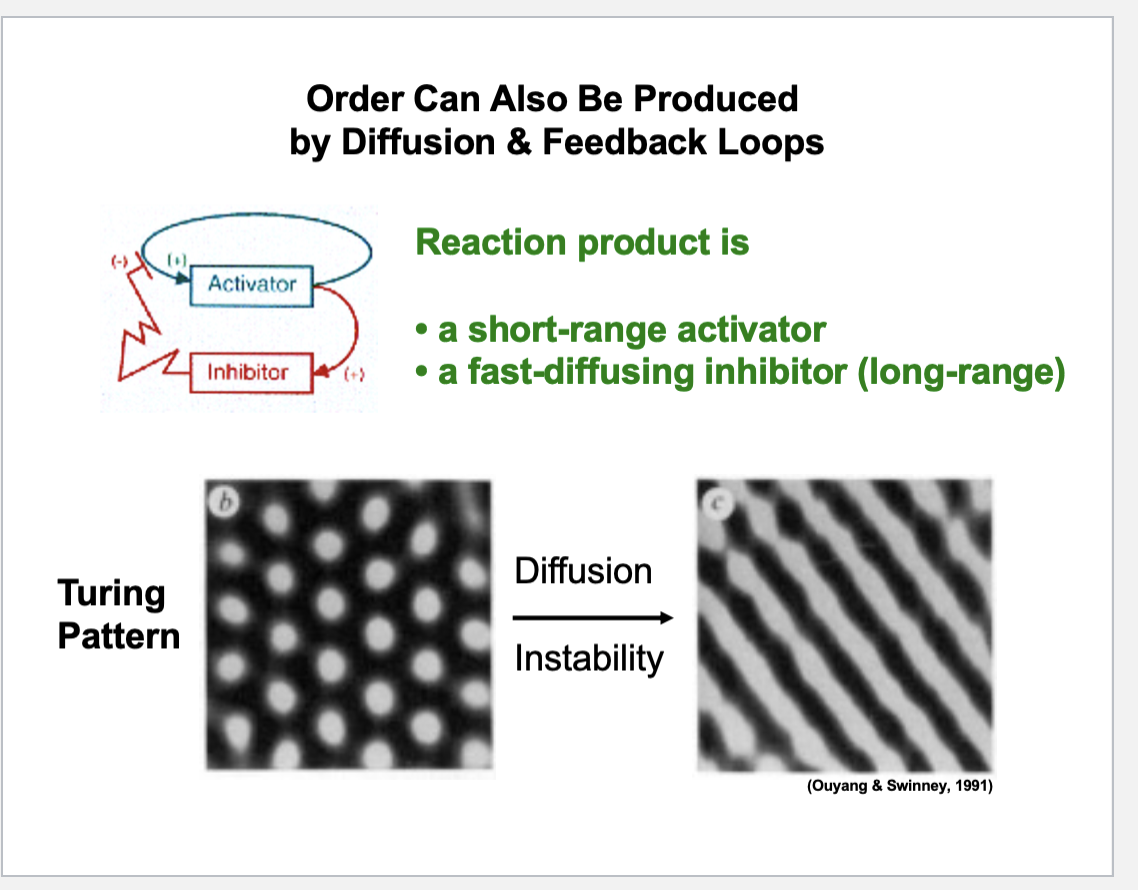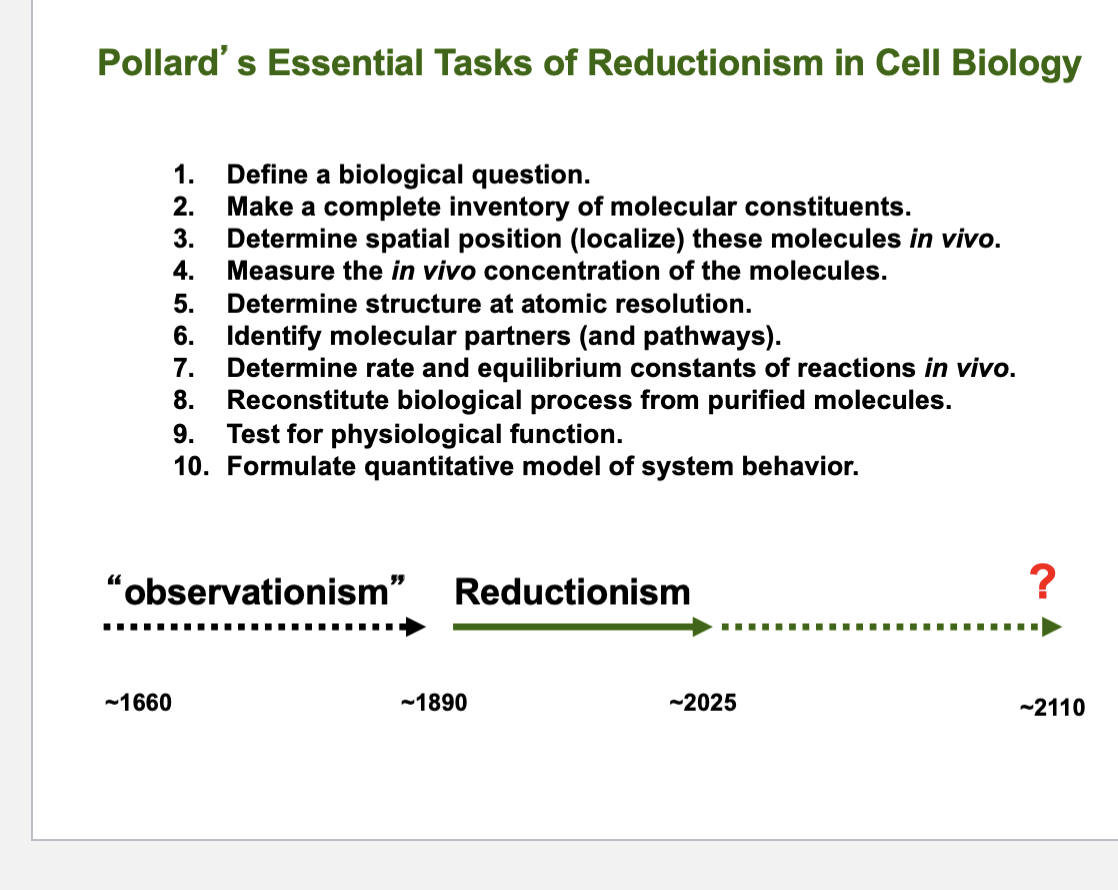Cell Biology (Notes 39)
1/9
Earn XP
Description and Tags
Final exam
Name | Mastery | Learn | Test | Matching | Spaced |
|---|
No study sessions yet.
10 Terms
Immanuel Kant
Scientist explored the question of “what is life??”
One of the first cell biologists - said life is a “self-organized, self-reproducing process”
The functions of a cell emerge by the process of self-organization
How do you reduce entropy in the system,?
A cell is an island of order in a sea of disorder —> churning of water causes currents in the water known as Benard rolls
There is energy being put INTO the system: heat
The collective interactions of the water molecules with the addition of thermal energy is creating order
These currents of water can be moving clockwise or counterclockwise
Energy is important for creating order

How can order also be produced by diffusion and feedback loops?
Turing patterns: a Turing pattern can be produced if two conditions are met (this is order met in the system)
A feedback loop that’s activating
An interlocked loop that is expressing an inhibitor that down regulates the loop that’s being activated
Found also in the cell cycle
When these chemicals intermix, they can form an interaction product that is white under the correct conditions
By mixing the chemicals together, there is a very ordered pattern of spots
This is a classic Turing pattern - the polka dots
This is what Turing predicted would happen under two conditions
Short-range activating molecule
A fast-diffusing inhibitor (long-range)
Needs to be diffusing quickly from its source
If you change the stability of the system, that is, the concentration of the molecules locally within the system, a different pattern will emerge
If there is instability in the concentration of molecules in the field of view, there is an instability emerging

Diffusion Instability
Don’t have constant concentration of molecules due to stochastic fluctuations in the diffusion of the molecules
Go from a polka dot pattern to a zebra like pattern
Where does order in a cell come from?
Order in a cell can result from stereo-specific molecular interactions that form a STATIC, stable structure at thermodynamic equilibrium
Self-Assembly
Where cells encounter viruses - the virion is surrounded by proteins that self-assemble (they interlock with each other and fit together one way)
Each subunit adds to the coat of the viral particle
Molecular interactions that form dynamic steady-state structures and are accompanied by a dissipation of energy
Self-Organization
Golgi
Microtubules growing and shrinking - examples of self-organization
Molecule interactions that form dynamic, steady-state structures and accompanied by a dissipation of energy
GTP is formed and adds onto the microtubule
If you want to disassemble the microtubule, you have to hydrolyze the GTP
There is always energy required to keep this system in a steady state
Think of the mitotic spindle as the self-organized structure —> spindle has great order to it
That is all forming due to the actions of motor proteins
Microtubules are sliding past each other and pushing the spindle apart and organizing the two spindles relative to each other
Those motor proteins are dissipating energy to form a spindle
Can form spindle without centrosome, like in plant cells
DNA, not because of what it encodes, but its very structure, can allow for molecular structure that can lead to higher-order structure and segregation
There’s temporal organization superimposed over spatial organization
Erwin Schrödinger
Organism (cell) ’s astonishing gift of concentrating a “stream of order” on itself
This is what life is about - ability to concentrate order
Pollard’s Essential Tasks of Reductionism in Cell Biology
How much do we really know about the cell?
If we thought about any phenomenon a cell executes, what do we really need to know to fully understand what we’re observing?
There are ten things you need to know:
Define a question - what are you looking at?
How does a cell carry out a specific process?
Can identify molecular constituents of a cell
Can know the structure of a lot of molecules
We know where a lot of molecules interact with a lot of other molecules and what pathways
What we lack:
Knowing what’s the in vivo concentration of the molecules in the cell
Determine the structure of atomic resolution
Determine the rate constant and the equilibrium constant in vivo
We don’t have a good chemical grasp of what we know about in the cell
Challenging how we understand the physiology of the cell
If we know what’s going on in the cell, can formulate quantitative model of system behavior
Cell should behave according to the model

Bacterial Cell Motility
Can understand that process fully
Can understand some part of that list but can’t know the list completely
Reductionism
Take a complex picture of a cell and break it down into all these parts
Can do in vitro recombination and see if you can re-capitulate the process
Have to understand how the entire process is integrated together
Many cells are happening simultaneously to know how a cell will grow
Have to observe all the systems simultaneously
Systems Biology/Network Biology
Can collect 50,000 data points at one time and can understand how all those data points connect to one another